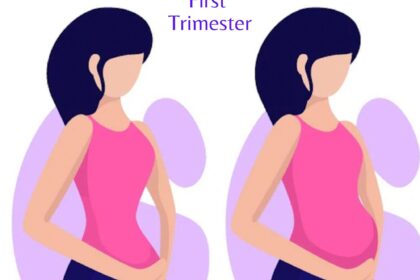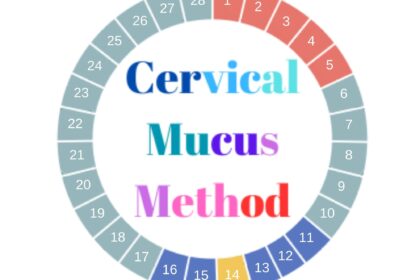When you’re expecting, the excitement is real, but so are the questions. What are the different birthing methods available? Which one is right for you? This article delves into the various birthing methods that you can consider. From the traditional to the modern, we’ll break down what each method entails, its pros and cons, and address some common concerns.
Vaginal Birth: The Natural Way
Vaginal birth is often referred to as the “natural” way of giving birth. This is the method that most people think of when they hear about childbirth.
What is Vaginal Birth?
Vaginal birth is when the baby is delivered through the birth canal. It’s the most common form of childbirth globally and has been practiced since the dawn of humanity.
Pros of Vaginal Birth
- Faster Recovery: One of the most significant advantages of vaginal birth is the quicker recovery time. Mothers usually stay in the hospital for a shorter period and can resume their daily activities sooner.
- Natural Process: The body is designed for vaginal delivery, and for many, it feels like the most natural option.
- Beneficial for the Baby: Babies born vaginally are exposed to beneficial bacteria from the mother, which can boost their immune system.

Cons of Vaginal Birth
- Pain: Vaginal birth can be incredibly painful, and not everyone handles pain the same way.
- Risk of Tearing: There’s a risk of tearing in the perineum, which can lead to a more extended recovery.
- Complications: In some cases, complications like prolonged labor or fetal distress can necessitate emergency interventions.
Taboos and Misconceptions
In many cultures, there’s a strong preference for vaginal births, often viewed as a rite of passage into motherhood. However, the idea that vaginal birth is the only “real” way to give birth can lead to unnecessary pressure and guilt for those who choose or require other methods.
Cesarean Section (C-Section): The Surgical Alternative
Next up is the Cesarean section, commonly known as a C-section. This surgical procedure is often planned in advance but can also be done in emergencies.
What is a C-Section?
A C-section involves delivering the baby through an incision in the mother’s abdomen and uterus. This method is usually opted for when vaginal birth poses risks to the mother or baby.
Pros of a C-Section
- Controlled Environment: Since C-sections can be scheduled, the delivery happens in a controlled environment with a team of specialists on hand.
- Avoids Labor Pain: Mothers who undergo C-sections avoid the pain and unpredictability of labor.
- Reduced Risk for Certain Complications: In cases of multiple births, placenta previa, or breech babies, a C-section can be the safer option.
Cons of a C-Section
- Longer Recovery: The recovery period for a C-section is generally longer, involving more extended hospital stays and a longer healing process.
- Surgical Risks: Like any surgery, C-sections come with risks, including infections and complications from anesthesia.
- Impact on Future Pregnancies: Multiple C-sections can lead to complications in future pregnancies, such as placenta accreta or uterine rupture.
Taboos and Misconceptions
In many places, there’s a stigma around C-sections, often viewed as the “easy way out.” This misconception can lead to feelings of inadequacy in mothers who undergo the procedure. However, it’s essential to understand that a C-section is sometimes the best option for the safety of both mother and baby.
Water Birth: A Gentle Approach
Water birth is gaining popularity as an alternative birthing method that promises a more relaxed experience.
What is Water Birth?
In a water birth, the mother delivers the baby in a tub of warm water. This method is believed to provide a more soothing environment for both mother and baby.

Pros of Water Birth
- Pain Relief: Warm water can provide natural pain relief and help the mother relax.
- Gentle for the Baby: Babies transition from the womb to the outside world in a more gentle manner.
- Lowered Blood Pressure: The calming effect of water can help lower the mother’s blood pressure during labor.
Cons of Water Birth
- Limited Availability: Water birth facilities are not widely available in all areas.
- Potential Complications: There’s a risk of infection or other complications, particularly if the water is not adequately maintained or if the mother has a high-risk pregnancy.
- Not Suitable for All: Water births are not recommended for mothers with certain medical conditions or complications.
Taboos and Misconceptions
Water birth is still relatively new in many regions, and there are misconceptions that it’s only for the elite or that it’s too risky. However, with proper medical supervision, it can be a viable option for many women.
Hypnobirthing: The Mind-Over-Matter Approach
Hypnobirthing is a relatively new birthing method, focusing on the power of the mind to manage pain and stress during childbirth.
What is Hypnobirthing?
Hypnobirthing involves using self-hypnosis, relaxation, and breathing techniques to prepare for and manage labor.
Pros of Hypnobirthing
- Reduced Anxiety: The techniques help reduce fear and anxiety, leading to a calmer birth experience.
- Less Need for Pain Medication: Many women report needing less pain relief during a hypnobirth.
- Empowering: The method empowers mothers to feel in control of their birthing experience.
Cons of Hypnobirthing
- Not a Guarantee: Hypnobirthing requires a lot of preparation, and results can vary from person to person.
- Limited Availability: Access to hypnobirthing classes and practitioners is still limited in some regions.
- Not Suitable for All Births: In high-risk pregnancies or complicated labors, hypnobirthing alone may not be sufficient.
Taboos and Misconceptions
Hypnobirthing is often viewed with skepticism, where more traditional or medical approaches are preferred. There’s a misconception that it’s too “new-age” or not scientifically backed, despite evidence to the contrary.
Other Birthing Options Available
Apart from the traditional methods mentioned above, there are a few other birthing methods that are gaining attention globally.
Lamaze: Breathing Techniques for Labor
Lamaze is a childbirth method that emphasizes breathing techniques to help women cope with labor pain.
What is Lamaze?
The Lamaze method focuses on breathing exercises, relaxation techniques, and movement to help women manage pain during labor. The goal is to reduce fear and increase confidence in a woman’s ability to give birth naturally.

Pros of Lamaze
- Pain Management: The breathing techniques can significantly help in managing pain during labor.
- Increased Confidence: Lamaze classes also provide education about childbirth, which can increase a woman’s confidence in her ability to give birth.
- Non-Medicated Approach: This method encourages a non-medicated approach to childbirth, which appeals to those wanting a natural experience.
Cons of Lamaze
- Not for Everyone: While it works well for some, others may find that it doesn’t provide enough pain relief.
- Requires Practice: The effectiveness of Lamaze depends on regular practice before labor, which might be difficult for some women to commit to.
Epidural Anesthesia: Medical Pain Relief
Epidural anesthesia is one of the most common methods for pain relief during childbirth.
What is Epidural Anesthesia?
An epidural involves injecting anesthesia near the spinal cord, which numbs the lower half of the body and helps manage labor pain.
Pros of Epidural Anesthesia
- Effective Pain Relief: Epidurals provide significant pain relief during labor, allowing the mother to remain awake and alert.
- Controlled Labor: This method allows for a more controlled and relaxed labor experience for some women.
- Widely Available: Epidurals are available in most hospitals, especially in urban areas.
Cons of Epidural Anesthesia
- Possible Side Effects: Some women may experience side effects such as low blood pressure, headaches, or back pain.
- Limited Mobility: Once an epidural is administered, the mother’s mobility is limited, which can affect the labor process.
- Intervention Needed: In some cases, an epidural can slow down labor, leading to the need for additional interventions, such as forceps or vacuum delivery.
Assisted Vaginal Delivery: Forceps or Vacuum Extraction
In certain situations, assisted vaginal delivery using forceps or a vacuum may be necessary.
What is Assisted Vaginal Delivery?
Assisted vaginal delivery involves using medical instruments like forceps or a vacuum to help guide the baby out during the final stages of labor.
Pros of Assisted Vaginal Delivery
- Helps in Difficult Labor: This method can be crucial when the baby needs help getting through the birth canal or if the mother is too exhausted to push.
- Quick Solution: It provides a quick solution in emergencies where immediate delivery is required.
Cons of Assisted Vaginal Delivery
- Potential for Injury: There’s a slight risk of injury to both the baby and mother, though it’s generally minimal when performed by experienced practitioners.
- May Require Additional Intervention: Sometimes, an assisted delivery can lead to the need for a C-section if complications arise.
Frequently Asked Questions About Different Birthing Methods
Which birthing method is the safest?
All birthing methods can be safe when conducted under the right circumstances and with proper medical supervision. The best method depends on the mother’s health, the baby’s condition, and the availability of resources.
Is it possible to choose a birthing method?
In many cases, yes. However, medical conditions or complications can limit your options. It’s crucial to discuss your preferences and health status with your healthcare provider to determine the best method for you.
How can I prepare for my chosen birthing method?
Preparation varies by method. For vaginal births, prenatal classes can be helpful. If opting for a C-section, understanding the surgical process and recovery is essential. Water births may require finding a facility and ensuring it’s available, while hypnobirthing requires attending classes to learn the techniques.
What if I need to change my birthing plan?
Flexibility is key in childbirth. While it’s good to have a preferred method, situations can change quickly. Trust your healthcare team to guide you through the best choices if circumstances shift.
What should I consider when choosing a birthing method?
When choosing a birthing method, consider your health, the baby’s health, your pain tolerance, and your access to medical facilities. It’s also important to think about your personal preferences and any cultural or family expectations. Discussing these factors with your healthcare provider can help you make an informed decision.
Can I combine different birthing methods?
In some cases, combining methods is possible. For example, you might start with a water birth and then move to a traditional vaginal birth if necessary. Hypnobirthing techniques can also be used alongside other methods, such as a C-section, to help manage stress and pain. It’s essential to discuss your options with your healthcare provider to see what combinations might work best for you.
Are there risks associated with changing my birthing plan during labor?
Yes, changing your birthing plan during labor can introduce risks, depending on the situation. For example, moving from a planned vaginal birth to an emergency C-section may involve a hurried decision-making process and increased medical interventions. However, these changes are sometimes necessary for the safety of both the mother and the baby. Clear communication with your healthcare team with the help of birth plan or communication throughout the process can help minimize risks.
What are some signs that I may need to change my birthing plan?
Signs that you may need to change your birthing plan include prolonged labor, fetal distress, or if your baby is in a breech position. Medical conditions like high blood pressure or excessive bleeding during labor can also necessitate a change in plan. Your healthcare provider will monitor your progress and advise if changes are needed.
What pain management options are available for different birthing methods?
Pain management options vary depending on the birthing method. For vaginal births, options include epidural anesthesia, nitrous oxide (laughing gas), or natural methods like breathing techniques. For C-sections, general or spinal anesthesia is used. Water births offer the soothing effects of warm water, while hypnobirthing focuses on mental techniques to manage pain. Discuss with your healthcare provider to choose the best pain management strategy for you.
How does my health history affect my choice of birthing method?
Your health history can significantly impact your choice of birthing method. For instance, women with a history of certain medical conditions, such as high blood pressure or diabetes, may be advised against some methods, like water birth or home birth. If you’ve had a previous C-section, your options for subsequent births might also be affected. It’s crucial to review your health history with your healthcare provider to determine the safest option for you and your baby.
Can I have a natural birth after a C-section?
Yes, many women can have a vaginal birth after cesarean (VBAC), but it depends on various factors, including the type of incision used in the previous C-section and the reason for it. Your healthcare provider will assess your individual situation to determine if a VBAC is a safe option for you.
What role does a birthing partner play, and how can they assist with different birthing methods?
A birthing partner can provide emotional support, help with pain management techniques, and assist with decision-making during labor. Their role may vary depending on the birthing method. For example, in a hypnobirthing scenario, the partner might guide breathing exercises, while in a water birth, they might help maintain a calming environment. Preparing together through prenatal classes can enhance their effectiveness in supporting you during labor.
What if I have more questions or concerns about my birthing options?
It’s normal to have questions and concerns as you approach your due date. Don’t hesitate to reach out to your healthcare provider, attend prenatal classes, or join support groups. Educating yourself about your options and openly communicating with your medical team will help you feel more confident and prepared for your birthing experience.
Conclusion
When considering the different birthing methods, it’s essential to choose the one that aligns with your health, comfort level, and the resources available to you. Each method has its advantages and challenges, and what works best will vary from one person to another. Discussing your options with a healthcare provider can help you make an informed decision that’s right for you and your baby. Remember, the goal is a healthy mother and baby, regardless of the method chosen.





